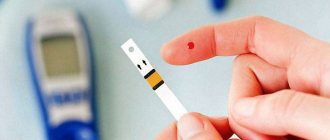Milk is found not only in its pure form, but is also included in many food products. The beneficial substances included in its composition form the basis for the full functioning of the cardiovascular system. Is there a relationship between milk and blood pressure? Is it possible to drink this product if you have hyper- or hypotension and how will this affect the general condition of the body? Is the ban on milk after 40 a myth or not? We will try to figure it out and together find answers to the readers’ questions.
Effect on blood pressure
Based on the results of studies of the diet of older people, scientists have come to the conclusion that daily consumption of milk, as a preventive measure, reduces the risk of hypertension in the future. However, if the disease is already progressing, this will not play a significant role. Unfortunately, milk will not help with high blood pressure or hypotension; scientists from the University of York came to this conclusion.
Milk does not have a significant effect on blood pressure and is used only as a means of prevention.
Natural warm milk eliminates the symptoms of hypertension. This is due to its calming effect. But drinking hot or too cold milk will definitely cause vasospasm and provoke an increase in it.
Beneficial features
This versatile product is rich in nutrients and components that can stabilize blood pressure. Milk contains:
- macroelements - K, Ca, Mg, Na, S, P, Cl;
- trace elements - Al, Fe, I, Co, Mn, Cu, Mo, Sn, Se, Sr, F, Cr, Zn;
- digestible carbohydrates;
- amino acids;
- saturated fatty acids;
- monounsaturated and polyunsaturated fatty acids;
- vitamins;
- proteins;
- water.
In addition, some trace elements included in its composition have a direct effect on the activity of the cardiovascular system:
- Ca - strengthens the heart muscle and blood vessel walls;
- Mg and K - remove cholesterol, thin the blood, prevent the formation of atherosclerotic plaques, and prevent arrhythmia.
The effect of nutrition on blood pressure
Many factors play a role in the development of hypertension. Not least of all is food. Blood pressure is affected not only by the composition of the diet, but also by a person’s eating habits, including how often they eat, how large the portions are, and how much fluid they drink.
A healthy, balanced diet is one of the conditions for maintaining a healthy cardiovascular system, normal heart function and optimal blood pressure levels.
There is a list of foods that increase blood pressure:
- Salt, additives, seasonings containing sodium: retain fluid, increasing its volume in the body, increasing the volume of circulating blood. Salt intake should not be too high even with hypotension. WHO recommends consuming no more than 5 g of salt daily (1 teaspoon).
- Products containing caffeine: coffee, green tea, cocoa. For example, strong sweet tea tones up and increases heart rate.
- High-calorie dishes. Baked goods, meat products, cheese, sweets, and high-fat dairy products provoke an increase in blood sugar, which causes blood pressure to rise. It is important for people with hypotension to eat foods that are nutritious enough, but they need to be careful that they are not excessively high in calories or contain too many carbohydrates or saturated fats.
- A large amount of water, watermelons, melons
Based on the mechanisms of increased blood pressure, nutritional principles have been developed:
The diet is significantly limited: table salt, nitrogenous extractives, animal fats and easily absorbed carbohydrates.
The diet should be enriched with potassium and magnesium salts, vitamins C, P and group B, vegetable oils, lipotropic substances (methionine, choline), dietary fiber (in bran, wholemeal bread, fruits, vegetables), and seafood rich in various minerals. substances and microelements, including organic iodine, B vitamins.
All food is prepared without salt, but in consultation with the doctor, it is allowed to add no more than 3-5 g of table salt to dishes.
To improve the taste of unsalted food, you can eat cranberries, lemon, prunes, jam, honey, sugar, vinegar, parsley, dill, cinnamon, citric acid, candied fruits, vegetable and fruit juices.
You can add yogurt, cumin, and anise to salt-free dough. When compiling a diet, you should also take into account the table salt content in the foods used for food.
Persons with arterial hypertension and excess body weight need to reduce the caloric content of their daily diet due to bread, sugar, cereal dishes, pasta and potatoes.
The total amount of free liquid (including first courses) is up to 1.5 liters. Main courses are prepared mainly boiled or baked or lightly fried after boiling.
Products useful for preventing arterial hypertension:
- raw vegetables, fruits and berries;
- foods rich in potassium salts (dried apricots, raisins, prunes, peaches, bananas, apricots, pineapples, rose hips, potatoes, cabbage, eggplants);
- foods rich in magnesium salts (soybeans, oatmeal, buckwheat, millet cereals; walnuts, almonds; bran);
- seafood containing organic iodine (seaweed, squid, scallop, shrimp, mussels, etc.),
- products containing a small amount of table salt (rice, oatmeal and semolina, cauliflower and white cabbage, carrots, beets, potatoes, pike perch, carp, pike, perch, beef, rabbit),
- foods containing large amounts of vitamin C (rose hips, black currants, strawberries, gooseberries, oranges, apples, cabbage, sweet red peppers, parsley, dill, green onions, etc.),
- products containing large amounts of B vitamins (bran, wholemeal rye and wheat bread, brewer's and baker's yeast, seafood, soy flour).
Can it harm the body?
Can milk harm the body? To answer this question, let’s pay attention to its composition:
- The main protein found in whole milk is casein, which has a glue-like consistency. Once in the human body, it is not able to break down completely, however, it is perfectly absorbed into the blood, creating additional stress on the kidneys, which can trigger the development of diabetes and allergies.
- After oxidation, milk fats pose a danger to adults. It is they, turning into oxidized cholesterol, that cause more harm to the body than regular cholesterol.
- Lactose. This substance can be absorbed by the body only with the help of bacteria that live in the intestines, breaking down into glucose and galactose. The latter is practically not absorbed and is difficult to remove from the body, accumulating over the years and provoking the development of cardiovascular diseases and obesity.
Calcium. Despite the fact that this element is most abundant, there is no guarantee that it will be completely absorbed by the body and will not subsequently cause additional problems. Its excess, entering into chemical reactions, can be deposited on the walls of blood vessels, forming so-called plaques. And the fact that it is calcium that provokes the formation of kidney stones is known to most patients who monitor their diet. Moreover, the process of pasteurization of a natural drink contributes to the formation of a microelement necessary for us into a chemical compound - calcium phosphate, which can subsequently accumulate in the pancreas or kidneys in the form of phosphate stones.
And also read on our website: How grapes affect blood pressure - does it increase or decrease levels, can they be consumed for hypertension?
The conclusion suggests itself: it turns out that milk is not the most harmless food product.
People over 45 years old are recommended to replace whole milk with fermented milk products.
Should you drink milk: a nutritionist on the benefits and dangers of your favorite product
Since childhood, most people perceive milk as an integral element of proper nutrition, but recently more and more studies have appeared indicating the dangers of this product. On World Milk Day, a RIAMO correspondent together with nutritionist Natalya Pugacheva tried to figure out whether it’s worth drinking milk, what arguments its supporters and opponents give, and how to choose a quality product.
Proteins, fats and essential minerals
According to Natalya Pugacheva, a nutritionist at the Health Management Clinic of the Institute of Personalized Medicine at Sechenov University, milk is one of the whole food products; it cannot be considered clearly a friend or an enemy.
“Milk and dairy products are rich in complete, easily digestible protein - cottage cheese and cheeses are not inferior in the amount of protein to meat and fish. Milk fat is very heterogeneous in composition and, in addition to saturated fats and dietary cholesterol, the dangers of which are often exaggerated, contains essential fatty acids, mono- and polyunsaturated. The milk fat drops also contain lecithin, fat-soluble vitamins A, E, and D,” says the expert.
Milk protein, like fat, according to the expert, is heterogeneous - it consists of casein and whey proteins (lactoglobulins and lactoalbumins). Thanks to this, it is complete and is 95% absorbed by the body.
For comparison, the expert cites the example of legume protein, which, despite its high nutritional value, the body can only absorb 30-40%.
The nutritionist considers the mineral composition to be another indisputable advantage of milk and products made from it. “First of all, we are talking about calcium. There is relatively little of it in milk or kefir itself - about 100 milligrams per 100 grams (with an average daily intake of 1000 milligrams). But hard cheese already contains 1000 milligrams of calcium per 100 grams. Taking into account the fact that with dairy products a person receives calcium in an optimal combination with vitamin D and phosphorus, it is difficult to replace them with something else,” Natalya Pugacheva is convinced.
For sufficient calcium intake, she advises consuming two to three servings of dairy products per day, for example, a glass of milk or kefir, 100 grams of cottage cheese and 30 grams of cheese.
Increased insulin, bad cholesterol and estrogens
Over time, information about the dangers of milk is becoming more and more: the popular product is accused of leading to brittle bones and increasing mortality rates. In milk, scientists found an insulin-like growth factor, which is considered one of the prerequisites for excess weight and cancer, as well as cholesterol, which causes atherosclerosis. In addition, the product that cows produce during pregnancy contains estrogens.
“Most of the accusations against milk appeared, oddly enough, in the wake of scientific discoveries, but if you look at the research results without hysterics and loud revelations, everything is not entirely true,” Natalya Pugacheva is sure.
According to the nutritionist, there is indeed a growth factor in milk, but its share is less than one percent of a similar factor produced by the body. A high insulin index is also present, but the increase in insulin levels after consuming dairy products was not associated with increased glucose levels, an increased risk of diabetes, or obesity in the studies. It's the same with cholesterol.
“Excess dietary cholesterol is harmful, more than 300-400 milligrams per day. This amount can be found in 3-4 liters of milk, 500 grams of cottage cheese or 250 grams of cheese. But such portions will seem unreasonable for most people,” explains Natalya Pugacheva.
The results of a study on the effect of milk on increasing mortality rates, which was conducted at Harvard University, are also ambiguous. Scientists compared groups that drank different amounts of milk. A higher mortality rate was observed when consuming 7 or more servings.
“The researchers themselves make a reservation that people in this group generally ate much more - not just milk. It’s difficult to pinpoint milk as the reason for the deterioration of their health,” comments the nutritionist.
Who shouldn't have milk?
Despite the controversial arguments of the “opponents” of milk, there are people who should not drink it.
First of all, these are those who are allergic to a certain protein, most often casein. “Allergies appear already in infancy, when feeding with formula or cow's milk begins.
The symptom can be either a disruption of the intestines or a skin rash,” says Natalya Pugacheva. People with lactose intolerance, that is, milk sugar, also need to be careful with dairy products.
In infancy, it is absorbed by the enzyme lactase. As you grow older and switch to an adult diet, the activity of the enzyme decreases, and milk sugar is less absorbed, and its excess in the intestines disrupts the functioning of the microflora. “Lactase deficiency in adults is determined genetically. A lot of data has been accumulated on population differences in the activity of the gene responsible for this enzyme.
Thus, among the indigenous inhabitants of northern Europe, people with lactose intolerance are much less common than among people from Asia or Africa,” explains the nutritionist. According to her, absolute intolerance is rare - more often its manifestations depend on the quality of the milk consumed. People over 25 years old can skip whole milk altogether, getting the necessary vitamins and minerals from fermented milk products, such as cottage cheese or cottage cheese. During their production, lactic acid bacteria “eat up” almost all the lactose.
In addition, people with lactose intolerance can replace regular milk with lactose-free or plant-based milk. When making lactose-free milk, the lactase enzyme is added to regular milk, and a product with already broken down sugar ends up on store shelves.
Plant-based versions resemble milk made from seeds, nuts, or grains in appearance. “Plant milk is a wonderful product in every way. It is a source of vegetable protein and healthy fats, vitamins and microelements. In addition, this “milk” also contains dietary fiber. Vitamins D and B12 are added to some types, which are not found in the original cereals or seeds. This makes plant milk especially attractive for vegetarians,” says Natalya Pugacheva.
Which milk to choose
According to information posted on the Roskachestvo website, the safest way to buy milk is to choose a product from a large manufacturer in a supermarket. Milk purchased at the market from a farmer or from a neighbor's grandmother is not always safe, because the owners may not notice the disease in the cow in the early stages.
You should also be careful with milk dispensers that sell raw milk. If boiling instructions are not followed, the consumer may receive unwanted microflora in addition to their morning cup of milk.
Roskoshestvo experts do not recommend consuming raw milk - it is better to pay attention to pasteurized, ultra-pasteurized or sterilized milk.
These heat treatment methods differ in the temperature and duration of heating the milk. For example, pasteurized milk is heated to 70 degrees, which preserves all its beneficial properties. The shelf life of such a product is 5-10 days. Ultra-pasteurized and sterilized milk have a significantly longer shelf life - up to six months at a temperature not exceeding +25 degrees. To achieve this, the milk is heated strongly - in the first case to 137 degrees for a few seconds, in the second to one hundred for 20 minutes. When buying milk, you need to pay attention to the packaging. It must be opaque and airtight - bacteria can enter the product along with air, and in sunlight, milk fat is susceptible to photo-oxidation. If the packaging is damaged, the expiration date has expired, or the milk was stored in incorrect conditions, for example, pasteurized outside the refrigerator, you should not buy the product - it may be spoiled. Link to publication: korzinka.riamo.ru
Contraindications
Considering the above, milk is contraindicated for the following categories of people:
- suffering from lactulose deficiency;
- prone to the deposition of calcium salts in blood vessels and the formation of phosphate stones in the kidneys;
- for allergy sufferers and individuals with individual lactase intolerance.
Restrictions
Hypertensive patients should not overuse dairy products that are too fatty, as this can lead to excess weight and cause surges in blood pressure. However, you should not completely exclude it from your diet; the main thing is to adhere to the norms approved by your doctor. It is also not recommended to consume milk that is too hot or cold, as this will cause vasospasm and increase blood pressure.
How to drink with hypertension?
In its purest form
When consuming fresh milk, follow these guidelines:
- drink it warm, in small sips, 1.5 hours before meals;
- add fresh or frozen berries and fruits;
- use in preparing porridges, puddings or other favorite dishes;
- do not combine with smoked meats, salted fish, sausages;
- do not wash down the baked goods with it;
- do not drink immediately after eating.
With tea
Fresh and properly prepared milk tea effectively lowers blood pressure.
Cooking method:
- boil the milk in advance;
- pour boiling water over half the container of tea leaves;
- After 1-2 minutes, fill it completely.
Before drinking, you should first pour milk into the cup and only then add tea. Drink no more than two cups per day.
This drink will help get rid of swelling and reduce the risk of heart attack and stroke.
With garlic
Milk with garlic has long been known as an effective remedy for hypertension.
Infusion recipe:
- Peel the middle head of garlic and break it into cloves;
- grind;
- add 200 ml of warm low-fat milk;
- leave for three hours for the drink to infuse.
And also read on our website: How to take apple cider vinegar for high blood pressure and to treat hypertension?
The prepared infusion should be taken for 7 days, drinking it 15 minutes after meals. Then take a short break from taking it, a couple of days will be enough, and repeat the weekly course.
Method of preparing the decoction
- 3-4 heads of garlic, medium size, peeled;
- pour 3 glasses of milk;
- put on low heat;
- Cook the garlic until it becomes soft;
- then cool the broth and strain.
Take the resulting drink 3 times a day, half a tablespoon after meals, for two weeks. Then you should take a break for the same number of days and repeat the course.
With honey
A glass of warm milk with honey drunk at night will help stabilize blood pressure and ensure sound, healthy sleep. This drink is usually recommended for hypertensive patients. When preparing the drink, you should not add additional ingredients other than a tablespoon of honey dissolved in it.
A hot drink will reduce the content of nutrients and will not be beneficial.
How to deal with the consequences of food poisoning
metaprebiotics
diarrhea
digestive problems
microflora
microbiota
Food poisoning (intoxication) is a severe functional disorder of the gastrointestinal tract, which is provoked by pathogens and their metabolic products (toxins), as well as factors not related to pathogenic microflora. Food poisoning caused by consumption of low-quality and thermally unprocessed food of animal and plant origin is more common among the population. Not only any type of poisoning in the midst of an illness is dangerous, but also the consequences that a person faces after recovery.
Symptoms of food poisoning
The pathogenic microorganisms themselves, their metabolic products or other toxic substances, aggressively affect the gastrointestinal tract along its entire length. Food poisoning is accompanied by dehydration (dehydration), damage to the mucous membrane of the stomach and intestines, and an imbalance of intestinal microflora.
The following are common symptoms of food poisoning:
- nausea and vomiting;
- stool disorders in the form of diarrhea (the frequency of the urge to defecate and the consistency of stool depends on the severity of poisoning);
- pain in the umbilical, left or right iliac region;
- bitter taste in the mouth;
- muscle weakness;
- general malaise;
- pale skin;
- headache;
- increased body temperature;
- dyspnea;
- drowsiness.
Toxins released by pathogenic microorganisms negatively affect the thermoregulation center located in the hypothalamus. The result of this influence is chills and fever. Diarrhea due to food poisoning is profuse in nature. Diarrhea and vomiting lead to significant loss of body fluids and the development of dehydration. Dehydration or dehydration is accompanied by increased heart rate and increased blood pressure.
The first symptoms of intoxication become apparent within 24 hours from the moment pathogens and other toxic compounds enter the body. Depending on the severity of poisoning, body temperature can range from 37.3-40 degrees.
Classification of food poisoning
Foodborne illnesses are divided into 2 main groups:
- Microbial origin. Food intoxication of microbial origin develops when microorganisms of a bacterial or fungal nature enter the body with food. Poisoning can be caused by enterococci, staphylococci, botulinum bacillus, bicilli, vibrios, E. coli, aspergillus, microscopic fungi, and penicillium.
- Non-microbial origin. This type of toxic infection is triggered by natural poisons of both plant and animal origin. Such components are found in the core of apricot kernels, poisonous wild berries and mushrooms, some weeds, sprouted potatoes, burbot caviar, and mussels.
Also, food poisoning can develop when salts of heavy metals, pesticides, nitrosamines and cyclic hydrocarbons enter the body.
First aid for food poisoning
If symptoms of food poisoning occur, you must follow the following algorithm:
- A person should be given 3-5 glasses of clean water to drink, and then induce a gag reflex by pressing two fingers on the root of the tongue. The procedure should be repeated until the water coming out is clean.
- After cleansing the stomach, it is necessary to give the victim an enterosorbent 4 times in a row with an interval of 15 minutes.
- The patient should be wrapped up and ensure complete rest. In the first 24 hours, the victim must refrain from eating food.
Nutrition after poisoning
In order not to worsen your general condition, it is important to know what you can eat after poisoning and what it is better to avoid. It is recommended to start eating on the second day after poisoning. You should start with weak chicken broth, moving on to pureed rice soups. The diet includes weak black tea without sugar, day-old white bread, crackers and crackers, baked apples without sugar, semolina, oatmeal, buckwheat porridge with water, lean fish, steamed or boiled.
Exclude semi-finished products, fried and fatty foods, fatty meats and fish, fresh vegetables and fruits, confectionery, baked goods, sauces, seasonings, spices, and fast food from the diet. The food consumed should not create additional stress on the digestive system and should not provoke diarrhea or irritation of the gastrointestinal mucosa. After suffering a food poisoning, it is very important to take care of restoring the intestinal microflora, since in 75% of cases, intestinal dysbiosis develops after poisoning.
It will take a lot of time for the body to restore normal microflora on its own, and it will not be able to do this fully. The question arises of how to restore the intestinal microflora by resorting to outside help. Metaprebiotics are a real first aid for an organism weakened by food poisoning and its consequences.
Stimbifide Plus is a fundamentally new product , which contains fructopolysaccharides and fructooligosaccharides, as well as calcium lactate. Together, these components actively restore the balance of intestinal microflora, providing it with a natural nutrient substrate and preventing the proliferation of pathogenic microorganisms.
It has been clinically proven that even the best prebiotic among modern brands does not compete in terms of effectiveness with metaprebiotics. Metaprebiotic Stimbifid Plus not only prevents and treats dysbiosis after food poisoning, but also helps to carefully restore the epithelium of the gastrointestinal tract, which has been damaged by bacterial waste products and other toxic components.
In addition, for severe food poisoning, antibiotics may be prescribed. Stimbifid Plus will help avoid the consequences of antibiotic therapy. It is necessary to start taking the metaprebiotic as early as possible, and continue to take Stimbifide Plus for 1.5-2 weeks after the general condition has normalized.
14.09.2020
52847
18
/ Doctor Stimbifeed
If the article was useful to you, share it with your friends:
Which one to choose?
As a healing drink, it is advisable to use natural, low-fat country cow's milk.
Whole fat milk contributes to the appearance of excess weight and sooner or later will provoke an increase in blood pressure.
Try to avoid goat's milk, which has a high fat content. Give preference to the low-fat version. It is more useful, since the casein contained in it is easier to digest.









